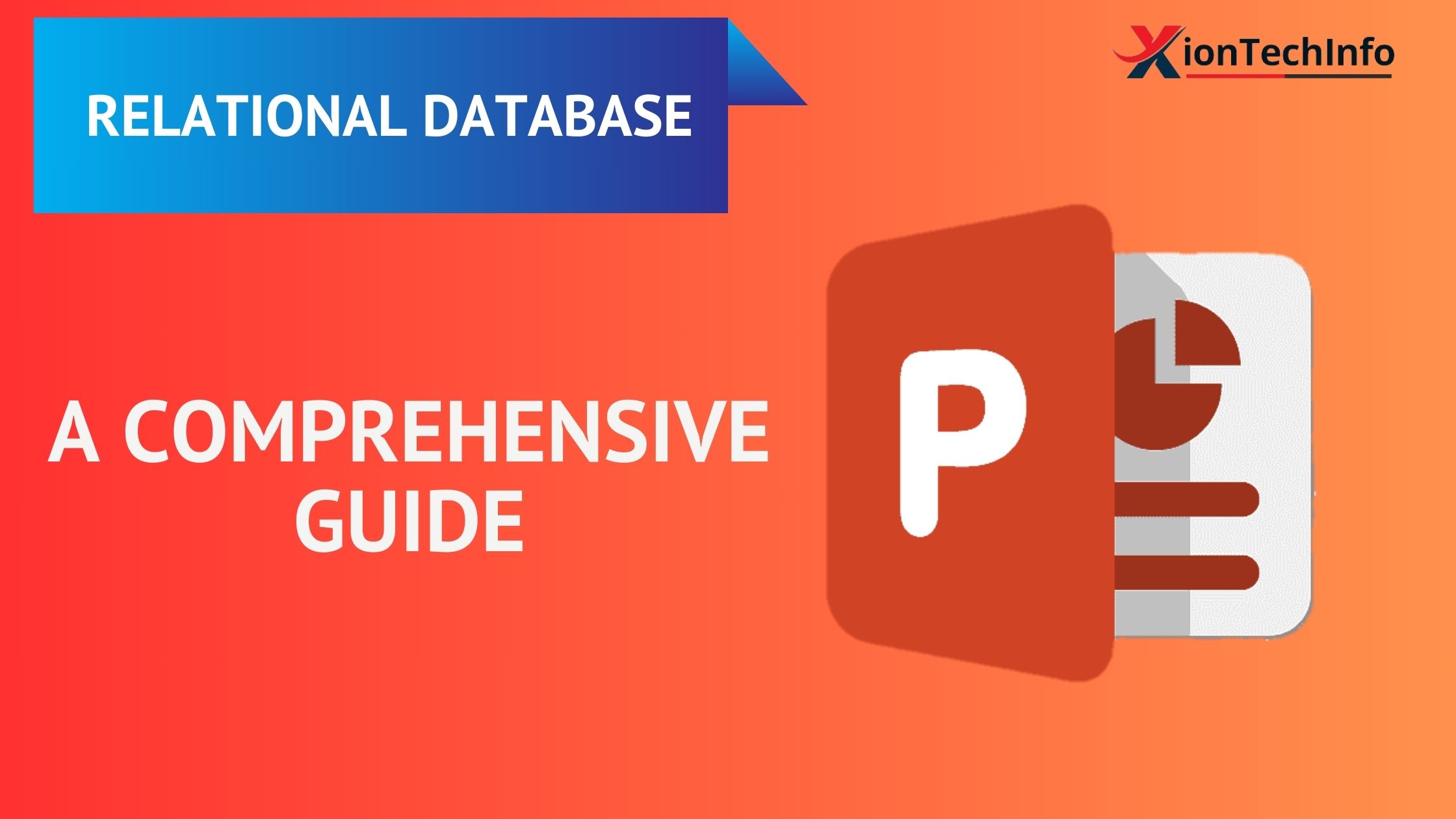In today’s digital world, relational databases are like the foundation of modern data management systems. Knowing what they are and how they work is super important for businesses, developers, and anyone dealing with data. In this easy-to-follow guide, we’re going to explore relation databases in detail, talking about what makes them special, why they’re useful, and where they’re used. Let’s dive in and get to know relation databases better!

Table of Contents
What is a Relational Database?
A relational database is a structured collection of data organized into tables, where each table represents a distinct entity, and the relationships between these entities are defined by common attributes. This model, pioneered by Edgar F. Codd in the 1970s, revolutionized data management by introducing a standardized approach to storing and retrieving information.
Characteristics of a Relational Database
1. Structured Data Storage
At the core of a relational database lies its structured nature. Data is organized into tables, with each table consisting of rows and columns. This structured format enables efficient storage, retrieval, and manipulation of data, ensuring consistency and integrity across the database.
2. Data Integrity
Data integrity is paramount in databases. Integrity constraints, such as primary keys, foreign keys, and unique constraints, maintain the accuracy and reliability of the data. These constraints enforce rules that govern the relationships between entities, preventing inconsistencies and ensuring data quality.
3. ACID Properties
Relation databases adhere to the ACID (Atomicity, Consistency, Isolation, Durability) properties, ensuring transactional integrity and reliability. Transactions are atomic, meaning they are treated as indivisible units, ensuring that either all operations within a transaction are completed successfully, or none are. This guarantees consistency, isolation from concurrent transactions, and durability of data, even in the event of system failures.
4. Query Flexibility
One of the key strengths of relation databases is their query flexibility. Structured Query Language (SQL) empowers users to retrieve, manipulate, and analyze data with ease. SQL’s rich set of commands allows for complex queries, joins, aggregations, and transformations, enabling users to extract valuable insights from the database.
5. Scalability and Performance
Relational databases offer both vertical and horizontal scalability options, allowing businesses to handle growing data volumes efficiently. Vertical scalability involves upgrading hardware resources, such as CPU and memory, to support increased workload demands. Horizontal scalability, on the other hand, involves distributing data across multiple servers or partitions, enabling load balancing and fault tolerance. Combined with efficient indexing and query optimization techniques, relation databases deliver robust performance, even under heavy workloads.
6. Data Security
Data security is a top priority for databases. Role-based access control (RBAC), encryption, and auditing mechanisms safeguard sensitive information from unauthorized access, ensuring compliance with regulatory requirements such as GDPR, HIPAA, and PCI DSS. By implementing robust security measures, organizations can mitigate risks and protect their valuable data assets.
Applications
Relation databases find widespread applications across various industries and domains, including:
- Enterprise Resource Planning (ERP): Managing business operations, such as finance, human resources, and supply chain, in a centralized database.
- Customer Relationship Management (CRM): Tracking customer interactions, managing sales pipelines, and analyzing customer data to enhance relationships and drive revenue.
- E-commerce Platforms: Storing product catalogs, managing inventory, processing transactions, and analyzing customer behavior to personalize shopping experiences.
- Healthcare Systems: Managing patient records, tracking medical histories, and ensuring compliance with regulatory standards for data privacy and security.
Conclusion
Relational databases embody a robust and versatile approach to data management, characterized by structured storage, data integrity, ACID properties, query flexibility, scalability, performance, and data security. Understanding these characteristics is essential for leveraging the full potential of relation databases in today’s data-driven world.
FAQ
What is a relational database?
A relational database is a structured collection of data organized into tables, where each table represents a distinct entity, and the relationships between these entities are defined by common attributes. It follows the relational model, which was pioneered by Edgar F. Codd in the 1970s.
What are the key characteristics of a relational database?
The key characteristics of a relational database include structured data storage, data integrity, adherence to ACID properties (Atomicity, Consistency, Isolation, Durability), query flexibility, scalability and performance, and data security measures such as role-based access control (RBAC) and encryption.
What are some common applications of relational databases?
Relation databases find widespread applications across various industries and domains, including Enterprise Resource Planning (ERP), Customer Relationship Management (CRM), e-commerce platforms, healthcare systems, and more. They are utilized for managing business operations, tracking customer interactions, storing product catalogs, managing patient records, and ensuring compliance with regulatory standards for data privacy and security.
